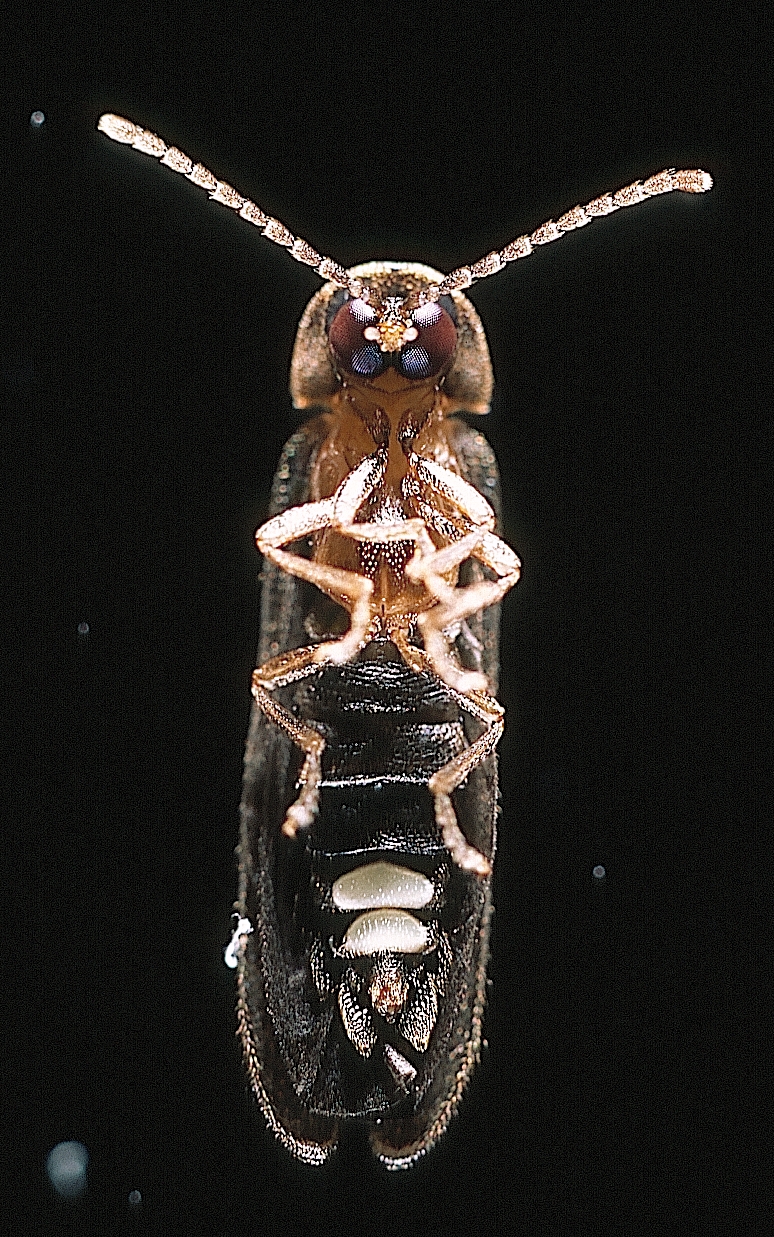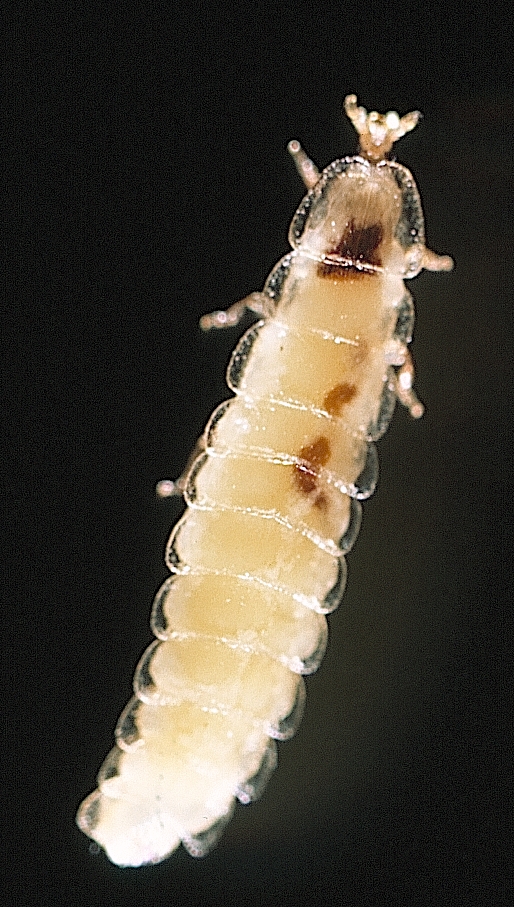While visiting the magnificent Biltmore House in Asheville, N.C., I had a close look at some of the gargoyles adorning the cornices. They look like bats! Gargoyles are almost always winged, with long ears, contorted faces, and fangs. Bats have prominent ears because their hearing is their most important sense. The weird faces, with fleshy outgrowths around the mouth and nose, help to focus echolocation sounds. Bat eyes are tiny and their faces seemed pinched because they don’t need the additional input afforded by good eyes placed far apart in an open face. The bats’ spiky teeth are used to catch the insects they eat, and their mouths are usually open while they hunt. Conjure up a scary beast to put a little thrill into your Halloween: give it wings to fly silently through the night, elongated ears the better to hear you with, a wrinkled face with beady eyes and prominent nose, and stiletto teeth bared into a grimace. Now you have a bat, and all those scary features are simply the way it catches mosquitoes and moths by using its hearing. Our imaginations have run amok with one of nature’s many forms.
Too many people think of bats as filthy, rabid bloodsuckers whose sole desire is to fly into and tangle your hair--how far from the truth! We misapprehend them because their natural history is so different from our own. Bats are nocturnal, which may be the reason for their bad reputation, because nocturnal animals differ from diurnal animals in basic biology. Instead of using eyesight, bats use hearing to catch food, navigate, and locate other bats. In fact, blind bats can operate normally, but deaf bats are soon dead bats, for they can neither feed nor fly.
Echolocation is the primary sense of bats. As they fly, bats open their mouths and emit high-pitched shrieks that are beyond the range of our hearing. Their strangely elongated noses help focus the outgoing beams of sound, in the same way that a megaphone can focus a human voice and project it over a longer range. Their large ears receive the returning echoes from objects in their paths, concentrating the incoming sound waves as a cupped hand or ear trumpet will do. Bat brains use those echoes of sound to generate a picture of the world through which the bat is flying in the same way that our brains decipher signals from the retinas of our eyes. The images created by echolocation allow bats to “see” in the dark. They can avoid obstacles as thin as a single human hair, not to mention an entire head of hair.
Imagine imaging your environment with sound instead of sight. Some exceptional, blind people can echolocate by listening to the echoes of a tapping cane or clicks of their tongues. Using echolocation, they can locate and identify objects.
Bats are more active at night because their insect prey, mainly moths, beetles, and flies, is also more active at night. Some tropical bats eat fruit, blood, fish, and other animals, but all Appalachian species are nocturnal insectivores. By flying at night, bats avoid competition with most birds for those tasty and nutritious insect morsels.
Bats are significant controls on insect populations because they must eat enormous quantities of food to power their high metabolisms. Their normal temperature is about 100ºF and their heart rate is 1000 beats per minute when flying. Most bats eat half their body weight in insects every night. For instance, a colony of endangered Gray Bats (Myotis grisescens) near Chattanooga, Tennessee is estimated to eat 220 tons of insects each summer from the area near that city.
Because their insect prey is greatly reduced during winter, bats, like insectivorous birds, must either migrate to warmer locations abundant in insect food, or hibernate and slow their metabolism to a level that can be sustained by their fat reserves. Most Appalachian species hibernate in caves. During hibernation, their temperature drops to that of the hibernation site, usually around 50ºF. Their heart rate drops to fewer than 15 beats a minute. Even with such a slowed metabolism, bats lose about ¼ to ½ of their weight during hibernation, which lasts five or six months.
Bats have been severely affected by White Nose Syndrome, which usually manifests itself during hibernation. It is a lethal fungus that grows on their bodies and damages the thin membranes of their wings. It also causes them to awaken during hibernation, which reduces their energy reserves so that they essentially starve to death. The disease has resulted in the death of over 5.7 million bats in eastern North America since it was first described in the winter of 2006.
Contrary to popular belief, bats are clean, not dirty, animals. Bats groom themselves like cats and are fastidious about cleaning their wings. Although it is correct that their roosting caves are often layered with their droppings, the guano builds up on the floor where we scrabble, not on the ceilings where they live. The ceilings are clean, providing secure toeholds for adult and young bats. Most hibernation caves have probably been used by bat colonies for thousands of years, for bats return to their home caves even if removed over 200 miles away. Humans have harvested the concentrated guano as a source of nitrogen for fertilizer and gunpowder. It is these human collectors of guano who become filthy, not the bats!
Although all Appalachian bats hibernate in caves, only some species use these caves in the summer months. Others spend the summer roosting during the daytime under bark or in tree cavities, and they readily accept bat houses. The Little Brown Bat (Myotis lucifigus), a common eastern species, is one of the few bats that enters buildings. It spends the summer in maternity colonies made up of hundreds of mothers and young. If you encounter such a colony, rather than killing them all outright, please determine whether you can wait until the young can fly and the mothers and young leave on their own. Maternity colonies leave the building at the end of summer. If you wait to seal the building in the winter, the bats will be gone and will not be able to get back in the following summer.
Bats usually give birth to only one offspring per year. The young are born early in the season, May or June, and can fly in two to five weeks after birth, depending on species. They are long-lived, especially for their size, with thirty years a common life span. In comparison, similar sized mice are reproductive within 35 days, can produce several litters every year, each with up to eleven young, and while they may live eight years in captivity, usually survive only one in the wild.
In the Appalachians, bats rarely carry rabies, but should never be picked up with bare hands. Like most frightened animals, they will bite if restrained, and any bat on the ground during daylight hours is not acting normally and may be ill. It is safe to say that if you are able to pick up a bat in the summertime, you shouldn’t. If you find a bat in the wintertime, it is hibernating; although you might be able to catch it, still you shouldn’t! Occasionally a bat becomes trapped in a house when searching for a roosting site. Open the windows and doors so that the bat can escape, but don’t panic. It will find a way out.
Can you help instead of harm these interesting animals that are fighting to survive the deadly White Nose disease?




